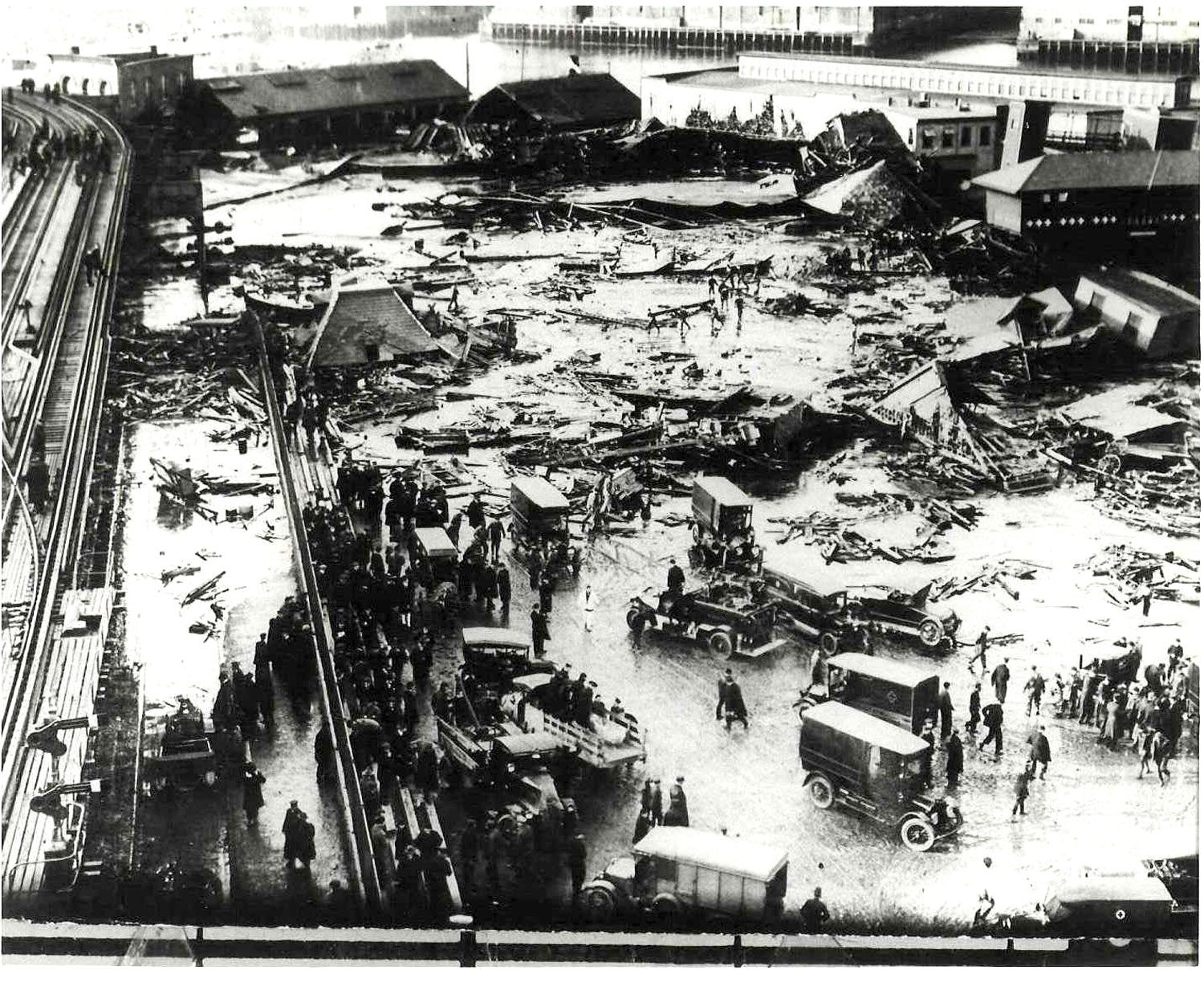LYNNFIELD — One hundred years ago, The Boston Evening Globe headline screamed: 15 killed, 150 injured in North End explosion. It was the first word for most readers of what would become known as the Great Molasses Flood.
It turns out 21 people perished. The greatest loss of life, the report said, occurred in a building where city employees were eating lunch. The building was demolished and the wreckage hurled 50 yards. Another city building was torn from its foundations and the nearby firehouse was crushed, leaving three firemen buried in the ruins, they wrote.
The tragedy struck at lunchtime on Commercial Street in the city’s North End on Jan. 15, 1919, when a 50-foot-high steel storage tank containing more than two million gallons of molasses collapsed, sending a wave of the thick syrup through the neighborhood at speeds as high as 35 miles per hour.
On Tuesday at 7:15 p.m., Stephen Puleo, the author of “Dark Tide: The Great Boston Molasses Flood of 1919,” will discuss the book at the Lynnfield Historical Society Meeting House on Main Street. The free event is co-sponsored by the Lynnfield Public Library.
Puleo said he didn’t set out to write a book about the calamity. As a graduate student of the University of Massachusetts Boston in 2003, he was writing his thesis on Italian immigration to the U.S.
During his research on the North End, he stumbled on the topic and wanted to learn more.
But there were no non-fiction books on the topic. He researched newspaper archives of the seven Boston papers published at the time of the event. All of them featured the flood on the front page for weeks, relegating the pending prohibition law, and the Treaty of Versailles that ended World War I, to the inside pages, he said.
Puleo discovered a case summary by Hugh W. Ogden, who was appointed by the Massachusetts Superior Court to hear evidence and issue a report about liability and damages. Puleo also examined the damage awards issued in the lawsuit to 119 plaintiffs, and read more than 20,000 pages of testimony.
Still, he acknowledged, unlike the Cocoanut Grove nightclub fire, which killed 492 people in 1942, the molasses flood has not received as much attention.
“The victims were ordinary working people, mostly Italian immigrants and Irish city workers, and some of their stories get lost,” Puleo said. “Plus, there’s a little bit of a giggle when you first hear it was molasses with headlines like ‘A sticky or gooey situation in Boston.'”
But it was a real tragedy, he said. In addition to the dead, others were injured, some seriously with broken backs and pelvises, and the flood nearly obliterated the North End’s waterfront.
Following the deaths and nearly two months of clean up, a civil lawsuit was filed against U.S. Industrial Alcohol, which built the tank three years earlier. The company’s high-powered Boston lawyers rejected the claim that shoddy materials and workmanship caused the tank to collapse. They claimed it was caused by anarchists who planted a bomb at the tank.
But the plaintiffs, including the city of Boston, argued the tank was the problem. They produced evidence the material used to build it was thinner than specified and showed the tank’s construction was rushed and untested.
The judge concluded the company had not produced any evidence of their claim and sided with the plaintiffs and awarded them $628,000, or $9.5 million in today’s dollars.
“This was a landmark case against a large company and led to many of the construction safety measures we have today,” Puleo said.

